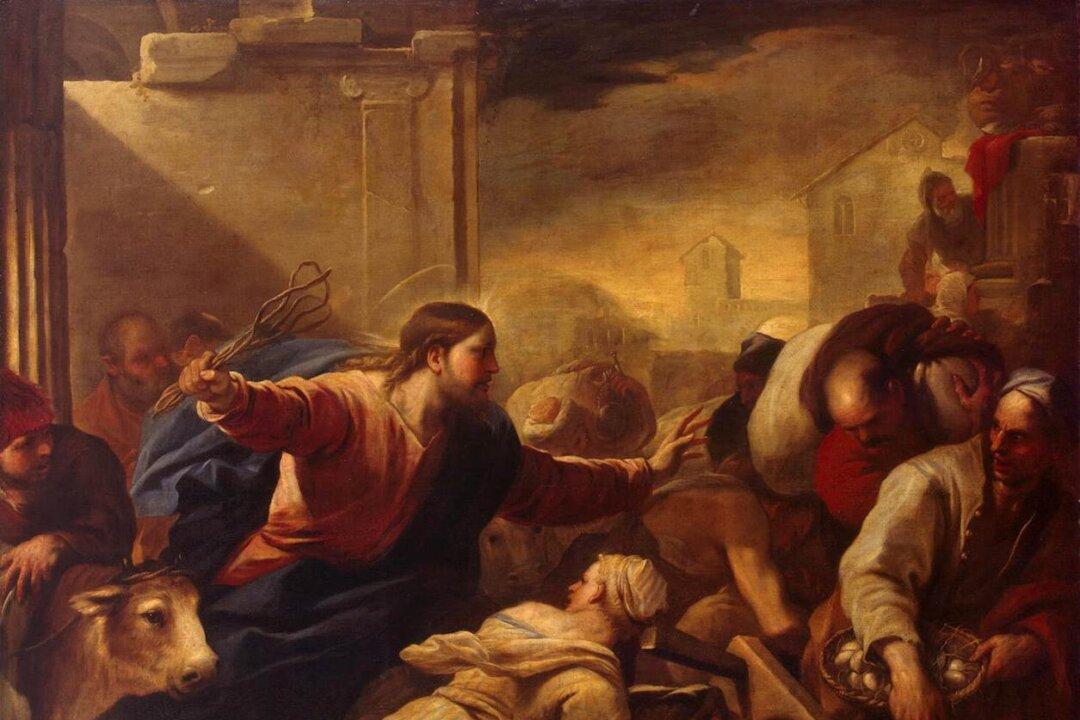Initially, he was influenced by the Spanish Baroque painter José de Ribera. Later, Giordano discarded the dark and somber look of Ribera’s paintings for the more colorful style of Italian Renaissance painter Paolo Veronese.

“Expulsion of the Money-Changers from the Temple,” 1675, Luca Giordano. Oil on Canvas, 78 inches by 103 inches. Hermitage Museum. Public Domain
|Updated:




